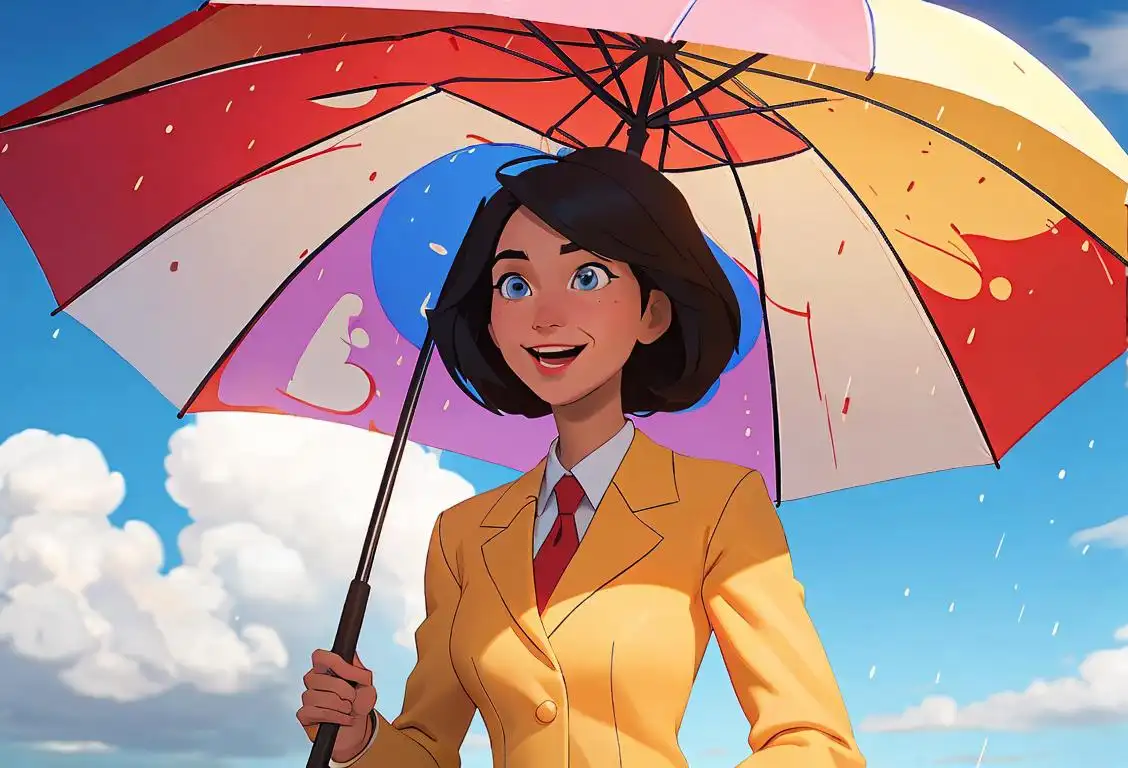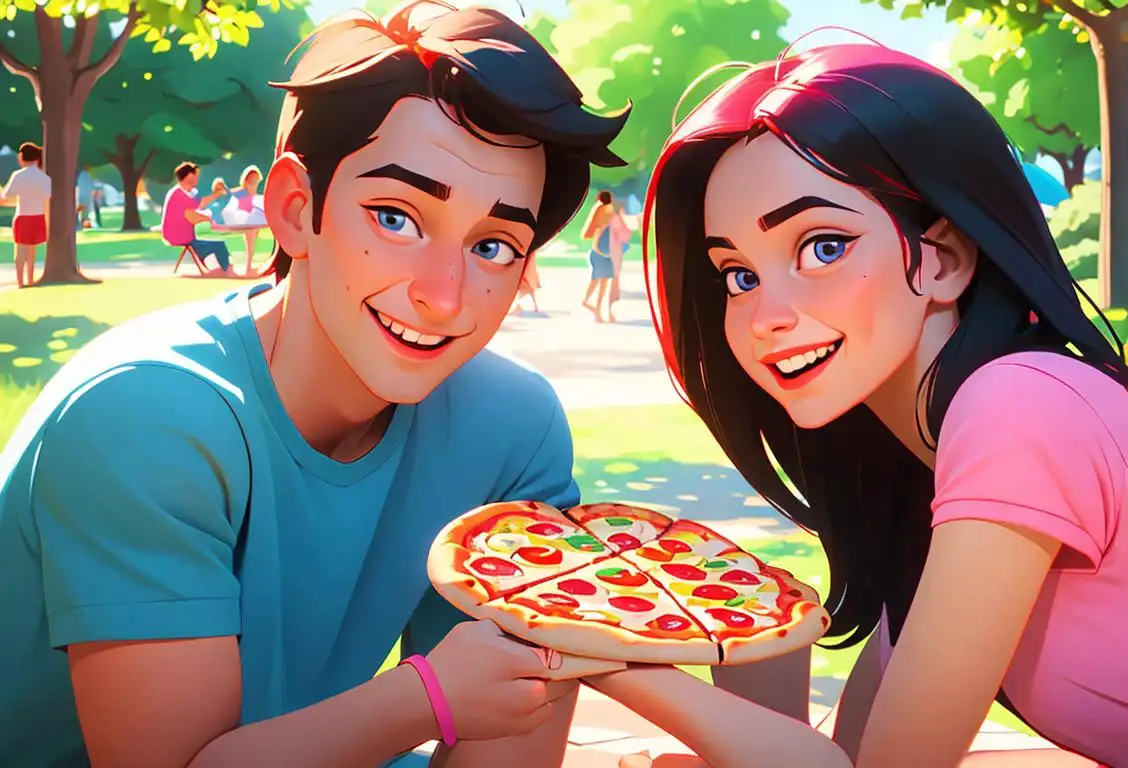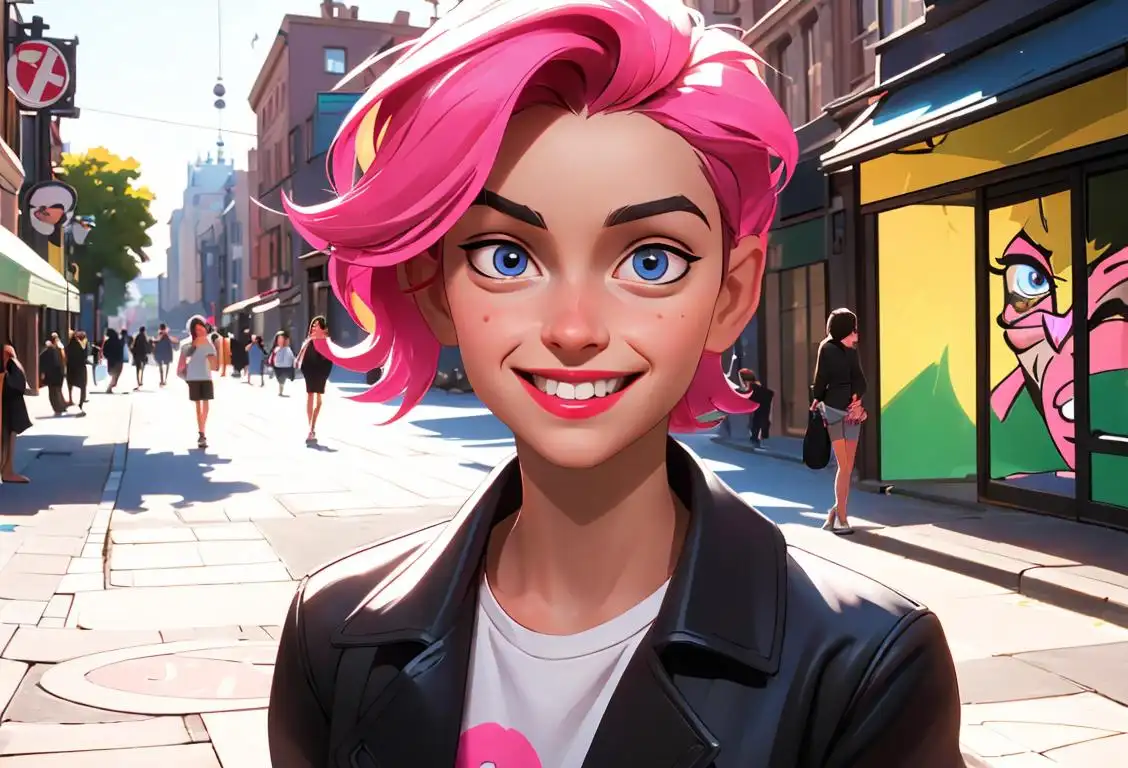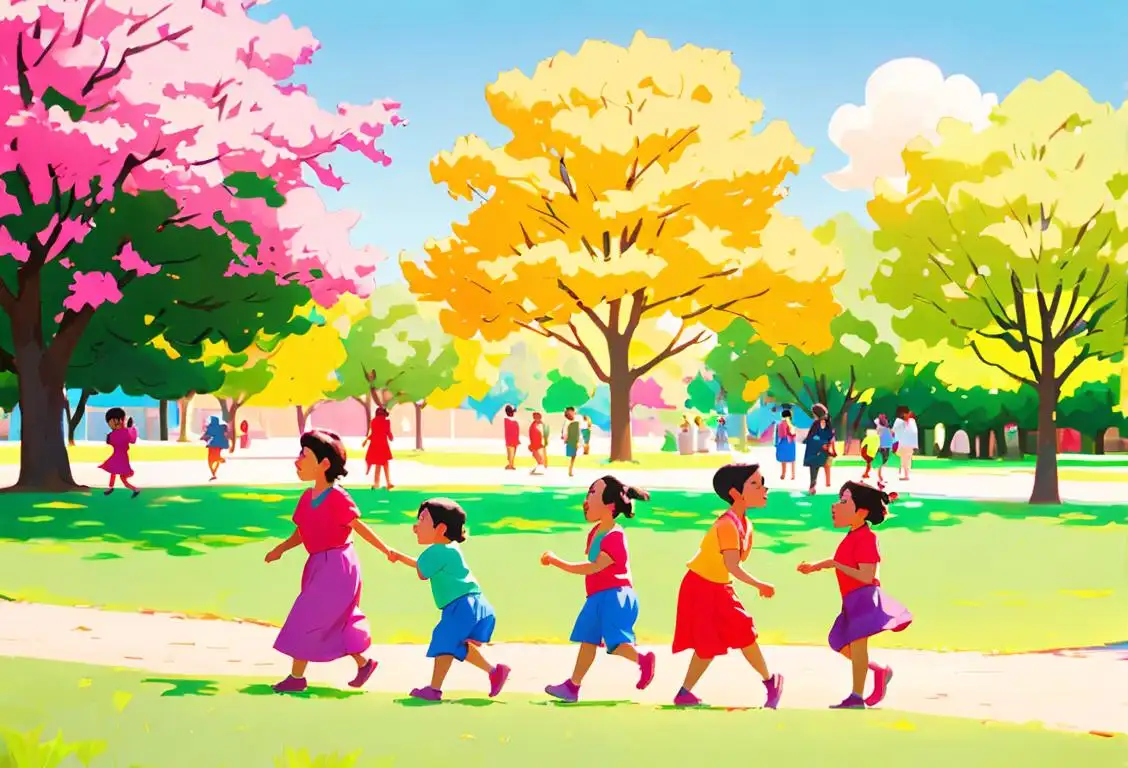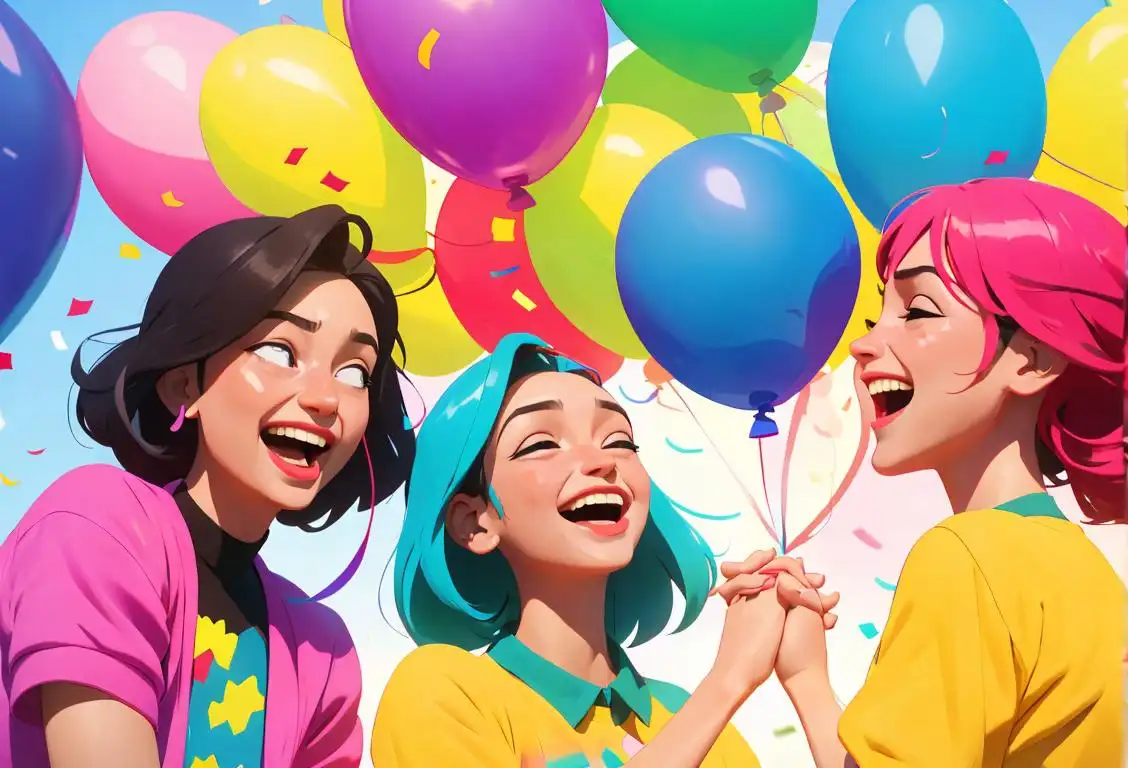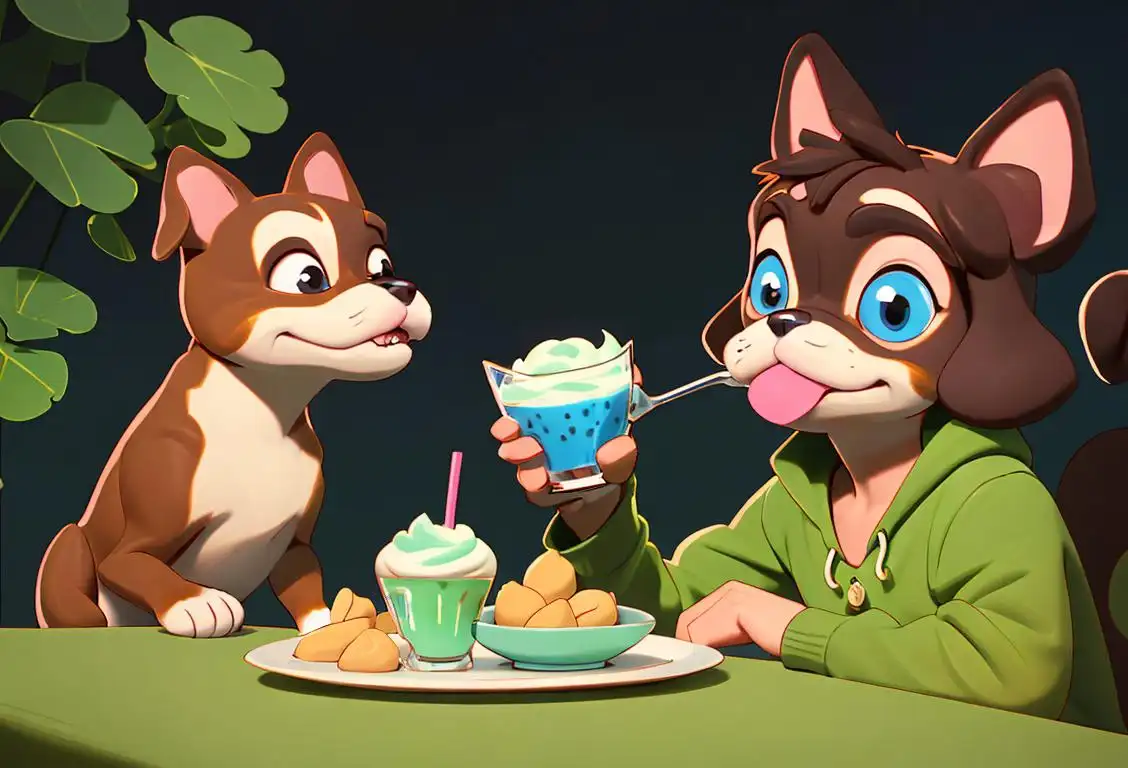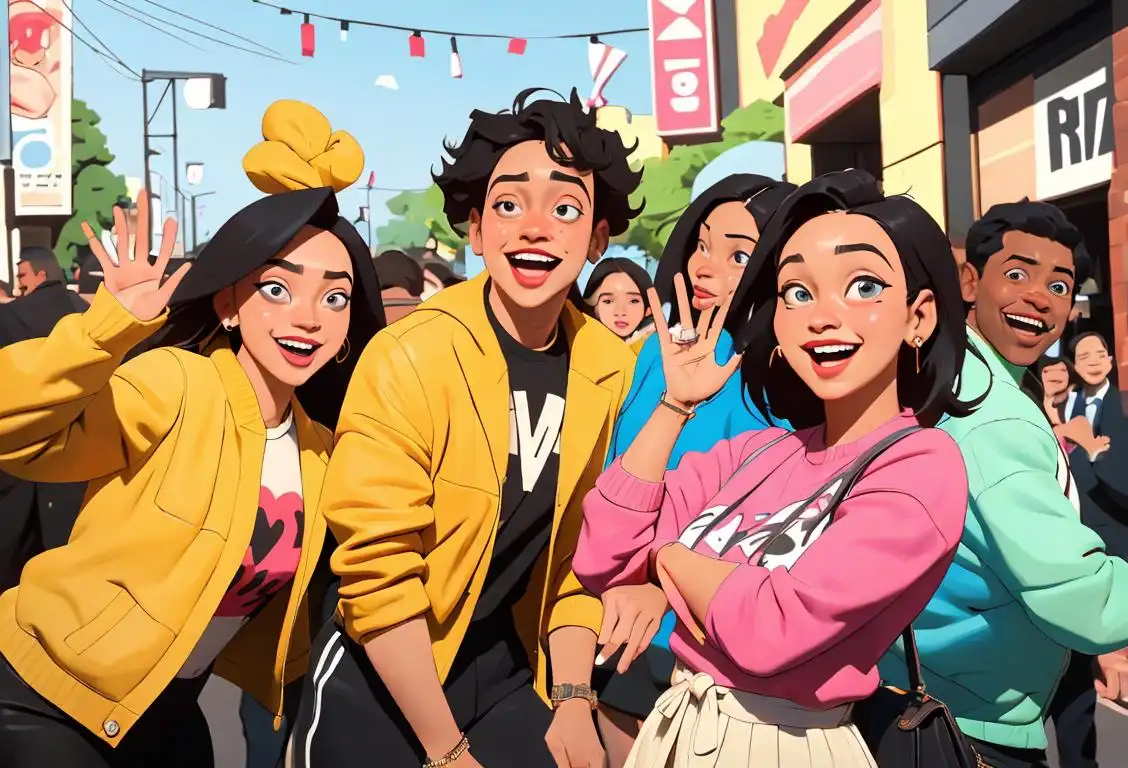National Yaoi Day
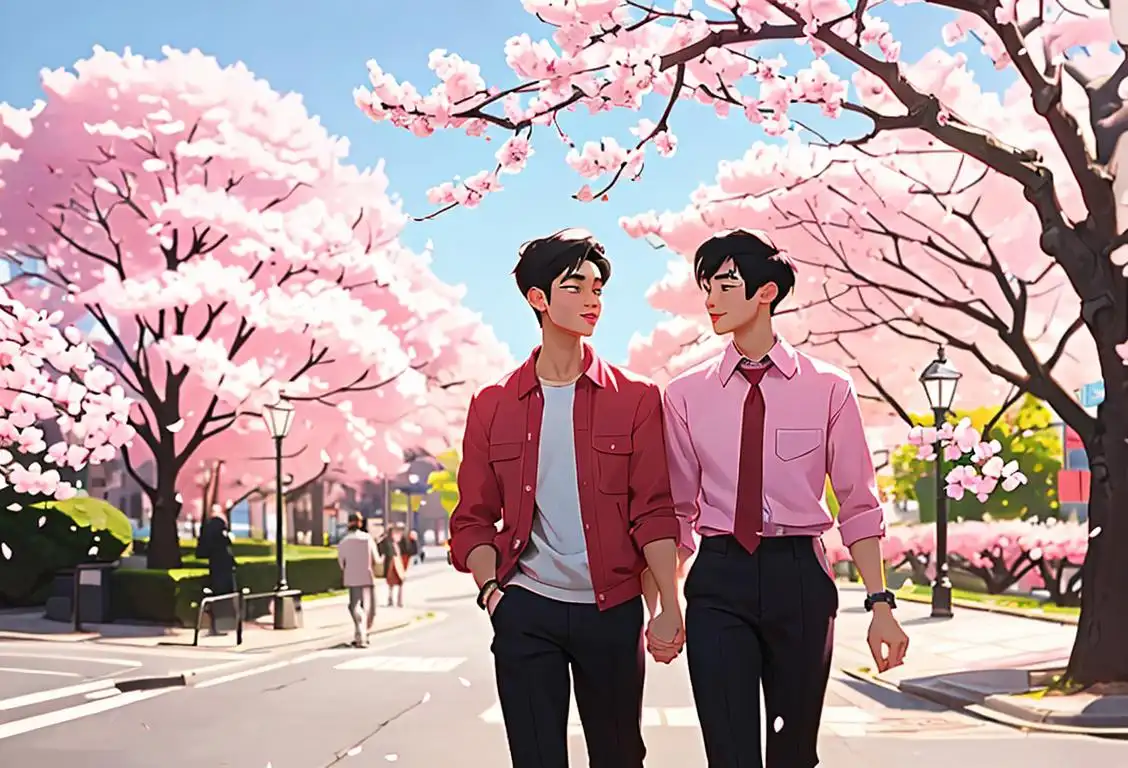
Hey there, lovely readers! Today, we're diving into the fascinating world of National Yaoi Day. Get ready for a dose of internet history combined with a sprinkle of celebration. Let's explore what this special day is all about!
When is Yaoi Day?
It's national yaoi day on the 1st August.
A Brief Origin of National Yaoi Day
Before we dive into the online chatter and festivities surrounding National Yaoi Day, let's talk about its origin. Yaoi, for those who are unfamiliar, is a genre of fictional media that focuses on romantic or sexual relationships between male characters, often created by and for women. It gained popularity in Japan and spread worldwide, capturing the hearts of fans everywhere.
While the exact internet origins of National Yaoi Day are not entirely clear, it became a notable fixture in online communities, particularly among fans of yaoi manga, anime, and fanfiction. The day serves as a celebration of the genre, fostering inclusivity, and connecting fans all around the world.
Online Buzz and Celebrations
The internet is abuzz with excitement on National Yaoi Day! Fans take to social media platforms, fan forums, and fan-created websites to express their love for yaoi and share their favorite works, stories, and moments. It's a day to celebrate the art, creativity, and emotional connections fostered through this engaging genre.
Yaoi fans often create stunning fan art, write compelling fanfiction, and engage in lively discussions about their favorite characters and pairings. From heartfelt debates to swooning over romantic gestures, the online community comes alive with joy and enthusiasm on this special day.
Some fans even organize local meet-ups, conventions, or events to celebrate National Yaoi Day in person. It's a chance to meet fellow fans, cosplay as beloved characters, and immerse themselves in a supportive and accepting community.
Did You Know?
Did you know that the term 'yaoi' originated in the 1980s in Japan? It was initially used to describe fan-created works based on popular manga and anime. Over time, its meaning evolved and became synonymous with the genre we know and love today.
History behind the term 'Yaoi'
1970s
Origin of Boy's Love manga
In the 1970s, the Japanese term 'Boys' Love' (or 'BL') was coined to refer to a genre of manga that focused on romantic or sexual relationships between male characters. This term became popular within the manga and anime community and laid the foundation for the term 'yaoi'.
1972
The establishment of the term
The term 'yaoi' originated in Japan in the year 1972. It was coined by Yasuko Sakata and Akijo Takeuchi during their publication of the dōjinshi (self-published works) magazine called 'Bara-komi.' They used the term to describe a genre of manga and anime that focuses on romantic or sexual relationships between male characters.
1976
The Birth of Boys' Love
In 1976, the term 'yaoi' came into existence in Japan with the publication of an essay by female manga artist and critic Keiko Takemiya. The essay focused on the emerging genre of manga and anime that depicted romantic relationships between male characters, which became known as 'Boys' Love' or 'BL' for short. This marked the beginning of a cultural phenomenon that would gain popularity both in Japan and around the world.
1970s
Origins of Boys' Love
In the 1970s, the genre known as Boys' Love, or BL, emerged in Japan. Initially, it referred to female-centric manga and novels featuring romantic or sexual relationships between male characters. The stories were created by and for women, offering a unique perspective on male-male relationships.
1970s
Origins of BL
In the 1970s, Japan saw the rise of a popular genre known as Boys' Love or BL. BL refers to fictional stories or art that explores romantic or sexual relationships between male characters. Initially created by and for women, BL became a significant part of Japanese manga and anime culture, providing an avenue to explore homoerotic content from a female perspective.
1970s
Origins of Boys' Love
In the 1970s, a genre known as Boys' Love (BL) emerged in Japan. It featured romantic and sexual relationships between male characters, primarily created by and for women. The term 'yaoi' is an acronym for 'yama nashi, ochi nashi, imi nashi,' which roughly translates to 'no climax, no resolution, no meaning.' It was coined by the creator Keiko Takemiya to describe the content of these stories, which often focused more on emotional connections than a traditional narrative structure.
1970s
Origins of Boy's Love manga
In the 1970s, the term 'yaoi' originated with the development of Boy's Love manga in Japan. Boy's Love manga refers to fictional stories that focus on romantic or sexual relationships between male characters, primarily created by and for women. These stories often explore themes of love, desire, and emotional connections.
1970s
Emergence of Boy's Love
In the 1970s, a genre of manga called Boy's Love (also known as BL) gained popularity in Japan. Boy's Love refers to Japanese fictional media that focuses on romantic or sexual relationships between male characters. Although it primarily targeted a female audience, it also attracted male readers who appreciated the emotional depth and storytelling of these works.
1970s
The origins of Boys' Love
In the 1970s, a genre of fictional media called Boys' Love began to emerge in Japan. Boys' Love, also known as BL, focused on romantic and sexual relationships between male characters. It gained popularity in manga (Japanese comics) and later expanded to other forms of media like anime and novels. The term 'yaoi' is derived from the acronym 'Yama nashi, ochi nashi, imi nashi,' which means 'no climax, no point, no meaning.' It was initially coined by creator Moto Hagio to describe a specific type of romantic story within the Boys' Love genre.
The 1980s
Yaoi Terminology
During the 1980s, the term 'yaoi' emerged to describe a specific subgenre of Boy's Love manga. The term is an acronym of the phrase 'Yama nashi, ochi nashi, imi nashi,' which roughly translates to 'No climax, no punchline, no meaning.' Initially used to mock the genre, it was eventually embraced by fans and creators alike.
1980s
Expanding Interest and Publication
During the 1980s, the popularity of Boys' Love grew, and more manga magazines dedicated to the genre emerged. The stories began to explore a variety of themes and subgenres within the BL genre, including both explicit and non-explicit content. The term 'yaoi' became widely used by fans and creators alike to refer to these works, encompassing a diverse range of narratives and art styles.
1980s
Evolving into Yaoi
During the 1980s, the term 'yaoi' began to gain popularity among fans and creators of Boy's Love manga. Originally, it was used as an acronym for 'Yama nashi, ochi nashi, imi nashi' which translates to 'no climax, no resolution, no meaning.' This reflected the focus of the genre on the emotional and romantic aspects of the relationships portrayed rather than a narrative climax or resolution.
1980s
Expansion and Commercialization
During the 1980s, Boys' Love manga and anime saw a rapid expansion in popularity and commercialization. Numerous artists and writers emerged, creating captivating stories and art that catered to the growing fan base. This period also saw the establishment of dedicated manga magazines and publishing companies, further solidifying the presence of Boys' Love in Japanese pop culture.
1980s
Yaoi: A Fandom Term
During the 1980s, fans of Boys' Love began using the term 'yaoi' as a shorthand to refer to the genre. The term originated from a combination of the Japanese words 'yama-nashi, ochi-nashi, imi-nashi' meaning 'no climax, no resolution, no meaning.' This initially ironic term later gained popularity and became the dominant term for the genre.
1980s
Introduction of 'Yamete, oshiri ga itai!'
In the 1980s, a manga series titled 'Yamete, oshiri ga itai!' (translated as 'Stop! My ass is hurting!') by Ootsubo Ryou was published. This series featured explicit sexual content between male characters and became a significant influence on the development of the yaoi genre. The erotic and homoerotic elements in 'Yamete, oshiri ga itai!' played a key role in shaping the future of yaoi-themed works.
1980s
Yaoi fandom emerges
During the 1980s, yaoi began to gain popularity among a predominantly female audience. It became a cultural phenomenon, especially among fujoshi (literally translates to 'rotten girl'), a term used to describe female fans who enjoy consuming homoerotic media. These fans played a significant role in shaping the yaoi community and its subsequent growth.
1980s
Introduction of the Term
In the 1980s, a subgenre of BL emerged, focusing specifically on explicit or sexually explicit content. This subgenre came to be known as 'Yaoi,' an acronym for 'Yama nashi, Ochi nashi, Imi nashi,' which translates to 'No climax, no resolution, no meaning.' This term encompassed the explicit nature of the content and its emphasis on physical intimacy rather than emotional depth.
1980s
The rise of 'Yaoi' as a term
In the 1980s, the term 'yaoi' gained popularity among fans and creators as a way to categorize and identify Boys' Love stories with explicit male-male relationships. While initially used informally, 'yaoi' gradually became the commonly accepted term for this genre. The term started to appear in fan discussions, convention panels, and even publications, solidifying its place within both fan and professional communities.
1990s
Global Spread
With the advent of the internet in the 1990s, yaoi gained significant global popularity. Online communities dedicated to sharing and discussing yaoi content allowed fans worldwide to connect and enjoy the genre. This contributed to its expansion beyond traditional manga and into fan fiction, fan art, doujinshi (self-published works), and even anime adaptations.
1990s
International Influence
Yaoi gained international popularity in the 1990s as manga and doujinshi (self-published works) found their way into the hands of fans around the world, particularly in the United States. Fans began translating and sharing yaoi works online, creating a global community of enthusiasts who explored and celebrated the genre.
1990s
International Recognition
In the 1990s, yaoi started to gain recognition outside of Japan. As the internet became more accessible, fan communities dedicated to yaoi flourished online. Fans created fan fiction, fan art, and even doujinshi (self-published works) based on their favorite yaoi pairings. These communities played a significant role in popularizing yaoi worldwide and fostering a sense of global fandom around the genre.
1990s
Yaoi: The term's emergence
In the 1990s, the term 'yaoi' started to gain popularity among English-speaking fans of Japanese manga and anime. Initially, it was used to describe fan-created works or doujinshi that depicted male-male relationships, often featuring explicit content. Yaoi quickly became an umbrella term encompassing the BL genre and its various subgenres.
1990s
Global spread and fandom
By the 1990s, yaoi gained a global following, with fan communities forming both online and offline. These fandoms dedicated themselves to creating and consuming transformative works based on yaoi manga, such as fan fiction, fan art, and doujinshi (self-published works). The spread of the internet facilitated the exchange and dissemination of yaoi content among fans worldwide.
1990s
Yaoi's global reach
During the 1990s, the influence of yaoi started to extend beyond Japan. Fans from different countries, especially in the West, discovered this genre and began to create their own fanworks, including fanfiction and fanart. The rise of the internet allowed fans to connect and share their creations, leading to the formation of online communities dedicated to yaoi. This global reach played a significant role in the genre's expansion and popularity worldwide.
1990s
Yaoi as a Fandom and Internet Presence
In the 1990s, the term 'yaoi' gained prominence as a commonly used term to refer to Boys' Love in the West. The internet played a crucial role in the dissemination of yaoi content worldwide, allowing fans to connect, share, and create fan works like doujinshi (self-published works), fanfiction, and fanart. Online communities and forums provided a space for yaoi enthusiasts to discuss and explore their shared interests.
1990s
International Recognition
During the 1990s, fan communities dedicated to Yaoi grew both in Japan and internationally. The internet played a crucial role in facilitating the spread of Yaoi content and enabling fans to connect and share their creations. Online forums, websites, and fan fiction communities allowed fans to discuss, create, and distribute Yaoi content to a global audience.
1992
Commercialization and dōjinshi culture
In 1992, 'Yaoi Jānaru' (Yaoi Journal) was published, becoming one of the first commercial yaoi magazines. This marked a turning point in the commercialization of yaoi, leading to an increase in professionally produced manga and anime within the genre. However, dōjinshi culture remained a vital component of yaoi's creative expression, with fans producing their own works and contributing to the community.
2000s
Yaoi in Mainstream Media
The 2000s witnessed a gradual move of yaoi into mainstream media. Anime and manga series that featured yaoi relationships or themes gained popularity not only within the niche fan base but also attracted broader audiences. This increased acceptance and recognition helped normalize the portrayal of male same-sex relationships and paved the way for more diverse and inclusive storytelling in Japanese media.
1990s-2000s
International recognition and influence
During the late 1990s and early 2000s, yaoi gained international recognition, primarily through online communities and fan translations. It attracted fans from various countries, leading to the spread of yaoi fandom globally. This international exposure helped influence the portrayal of LGBTQ+ characters and relationships in mainstream media by challenging traditional notions of sexuality and providing a platform for marginalized voices.
2000s
Yaoi's global recognition
During the 2000s, yaoi gained significant international recognition and a dedicated fan base outside of Japan. The increasing accessibility of manga and the growing popularity of online communities facilitated the global spread of yaoi fandom. Numerous websites and forums emerged where fans could share and discuss their love for yaoi, fostering a sense of community and contributing to its widespread popularity.
2000s
Yaoi in popular culture
In the 2000s, yaoi began to make its way into mainstream popular culture. The term was recognized beyond the fan communities and gained acknowledgement in academic circles, leading to scholarly analysis and discussions about its cultural impact. Various media adaptations, including anime and live-action film, contributed to the increasing visibility and acceptance of yaoi.
2000s
Yaoi as a Cultural Phenomenon
During the 2000s, yaoi expanded beyond its origins in manga and doujinshi. It influenced various media forms such as anime, light novels, video games, and even live-action adaptations. As it gained mainstream attention, yaoi started to shape and redefine popular notions of romance, gender, and sexuality, showcasing diverse relationships and challenging traditional narratives.
2000s
Mainstream Popularity
In the 2000s, Yaoi gained significant mainstream popularity, expanding its reach beyond dedicated fan communities. The influence of Yaoi could be seen in various forms of media, including manga, anime, novels, and even live-action adaptations. Its appeal extended beyond traditional BL enthusiasts, attracting a diverse audience fascinated by the exploration of complex relationships and non-conventional storytelling.
2000s
Cultural Influence and Adaptations
During the 2000s, the influence of yaoi expanded beyond fan communities and into mainstream media. Popular yaoi manga and anime series like 'Gravitation' and 'Junjou Romantica' gained a substantial following both in Japan and internationally. The genre's impact extended to other media forms, including live-action adaptations, video games, and even stage plays, further solidifying its place within popular culture.
2000s
Yaoi's mainstream visibility
In the 2000s, yaoi gained mainstream visibility and acceptance in various forms of media. It appeared in popular anime series, manga volumes, and even live-action adaptations. While still primarily targeted towards and consumed by a female audience, yaoi's impact reached beyond its original demographic. The genre's themes and storytelling techniques found their way into other genres and influenced the portrayal of male-male relationships in broader media.
2000s
Commercial Success
During the 2000s, yaoi experienced a surge in commercial success. The genre became more mainstream, reaching a larger audience outside of its niche fanbase. Major publishing houses started releasing official translations and licensed versions of yaoi manga, catering to the growing demand for this unique form of storytelling.
Present
Yaoi Today
Today, Yaoi continues to hold a prominent place in Japanese popular culture. It has even influenced the development of related genres, such as Boys' Love and BL-themed video games. Despite its explicit nature, Yaoi is recognized for its ability to explore diverse themes, portray multifaceted characters, and challenge societal norms. It remains a captivating and enduring aspect of manga and anime, cherished by fans worldwide.
Present
Continued growth and diversification
Today, yaoi continues to evolve and diversify. It has expanded beyond its original depiction of male-male relationships and now encompasses various subgenres and themes. Yaoi-inspired content can be found in manga, anime, novels, video games, and even live-action adaptations. The term 'yaoi' has transcended its original meaning and become a significant part of both Japanese and global popular culture.
Present
Yaoi's enduring popularity
Today, yaoi continues to be a significant part of Japanese and global fandom culture. It has evolved and diversified, incorporating different subgenres and appealing to a broader range of audiences. Yaoi-themed conventions, exhibitions, and merchandise consistently attract devoted fans. The term 'yaoi' has become an established part of the cultural lexicon, representing a distinct genre that explores love, desire, and relationships between male characters.
Present
Continued Popularity and Acceptance
Today, yaoi remains a thriving genre, with a dedicated fan base and a wide range of content. It continues to evolve, encompassing various subgenres and themes, while continuing to captivate audiences worldwide. The cultural impact of yaoi extends beyond entertainment, fostering discussions on representation, consent, and the fluidity of gender and sexual identities.
Present
Continued Influence and Diversity
Yaoi continues to have a significant cultural impact in modern times. It has not only evolved artistically but also diversified in terms of representation and themes. Artists and creators explore a wide range of relationship dynamics and identities, leading to the inclusion of diverse LGBTQ+ characters and narratives. Today, yaoi remains beloved by fans globally for its emotional depth, engaging stories, and inclusive portrayals of same-sex romance.
Present Day
Global Impact and Subgenres
Today, yaoi continues to thrive as a well-known and cherished genre of manga, anime, and fan works worldwide. It has inspired numerous subgenres and spin-offs, including 'shounen-ai' (which focuses on romantic relationships without explicit content) and 'yuri' (depicting romantic relationships between female characters). Yaoi conventions and events are held in various countries, attracting fans from diverse backgrounds, and fostering a sense of community within the fandom.
Present
Continued influence and diversification
Today, yaoi remains a popular and influential genre, with a wide range of content catering to different tastes and subgenres. While it continues to predominantly target a female audience, yaoi has also gained a male following. Moreover, the term 'yaoi' has expanded to encompass various non-Japanese works that depict male-male romantic or sexual relationships, further diversifying its cultural impact.
2010s
Diverse Representation and Subgenres
In the 2010s, yaoi continued to evolve and diversify. Creators explored alternative subgenres within the BL genre, such as shounen-ai (milder, non-explicit stories) and omegaverse (a subgenre featuring alpha, beta, and omega dynamics). The representation of LGBTQ+ characters and relationships in yaoi also became more varied and nuanced, reflecting changing societal attitudes and a growing demand for diverse narratives.
Present
Yaoi's diverse representation
In the present day, yaoi continues to thrive as a subculture that explores male-male relationships in manga, anime, and other media forms. The genre has evolved to encompass a wide range of themes, including romantic, comedic, and even fantasy elements. Yaoi has also played a significant role in increasing LGBTQ+ representation in Japanese popular culture, contributing to greater acceptance and understanding of diverse sexual orientations.
Did you know?
Did you know that the term 'yaoi' originated in the 1980s in Japan? It was initially used to describe fan-created works based on popular manga and anime. Over time, its meaning evolved and became synonymous with the genre we know and love today.Tagged
romance nsfw funFirst identified
1st August 2020Most mentioned on
1st August 2020Total mentions
24Other days
Aldub Day
Weatherpersons Day
Love Pizza Day
Kisses Day
Awareness Day
One Day
Children Day
Happiness Day
Opposite Day
Ojd Day

